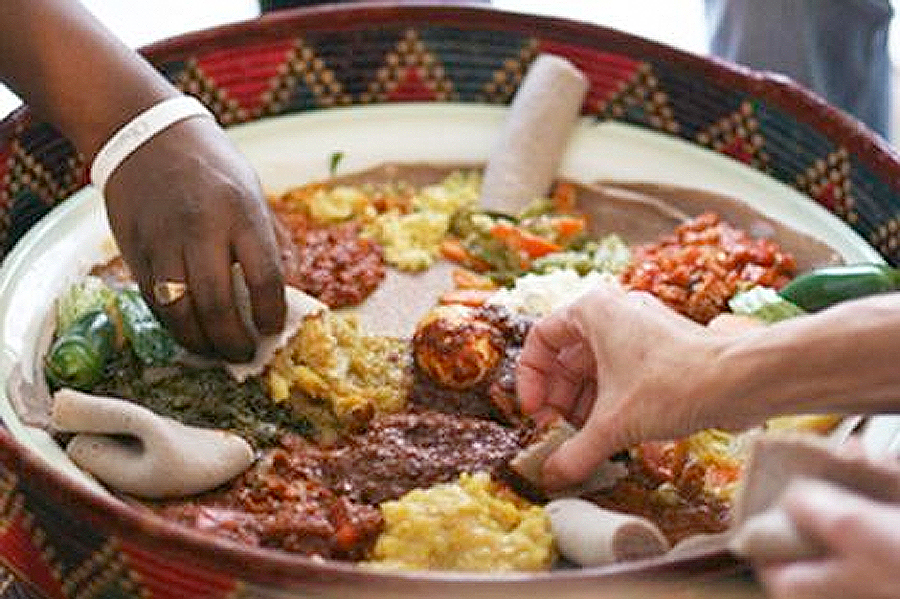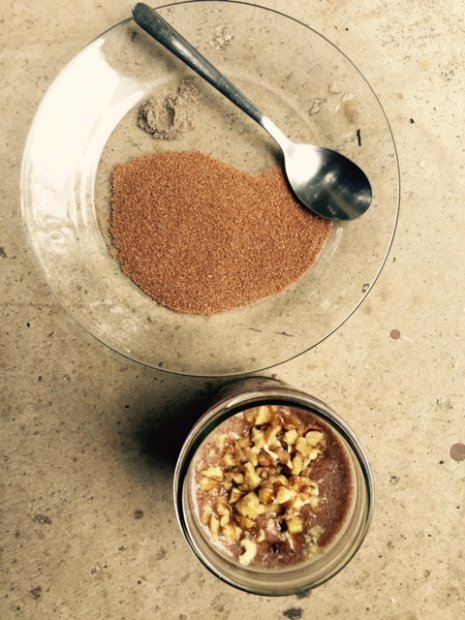Share This
In April 2016, Ethiopian runners took five of the top six spots in the Boston Marathon here in our home town. This year, Ethiopians won marathons in Rome, Los Angeles and along China’s Yellow River, among others. As always, the question arises: What makes marathoners from this part of the world so successful?
Some runners have decided the answer might be teff, a tiny gluten-free grain that’s a staple throughout Ethiopia. Since teff shares November’s Grain of the Month spotlight with millet (which Caroline blogged about last week), let’s see if these runners might be on the right track (pun intended) with teff.
In Ethiopia and neighboring Eritrea, teff is used to make the spongy fermented injera bread eaten with most meals. Injera has sometimes been described as an “edible tablecloth,” since stews are often ladled out onto rounds of injera placed directly on the table. Chunks of another round of injera are then torn off and used as “spoons” to scoop up the stew; when the stew is gone, the base round of bread, now soaked with delicious juices, is consumed.
Why did runners latch onto teff as a possible “runner’s superfood,” when surely Ethiopians eat many other foods? Athletes know that red blood cells carry oxygen and that iron helps keep red blood cells working optimally (essential for aerobic exercise). As grains go, teff is high in iron. One cup of cooked teff provides 5 mg of iron – about the same amount as in 7 ounces of cooked steak, ¾ cup of cooked spinach, or 1 ¼ cups of cooked white beans such as Navy beans.
Research bears out the benefits of healthy iron status for runners – and the potential role of teff in providing that iron. In 2015, a group of UK scientists reviewed several studies to see whether additional iron could be of help to endurance athletes who are iron-deficient. They concluded that “iron treatments improve the iron status and aerobic capacity of iron deficient non-anemic endurance athletes.”
Just a year earlier, in a very small study at the UK’s Manchester Metropolitan University, researchers asked 11 female runners to replace their usual (wheat) bread with teff bread for six weeks. Going into the study, the women’s daily iron intake averaged 10.7 mg/day – considered iron deficient. But after eating teff bread for six weeks, the runners had upped their daily iron intake to an average of 18.5 mg/day, thereby meeting their daily needs. (18 mg/day is recommended in the U.S. for women of child-bearing age. Most men need about 8 mg/day.)
We’re not suggesting that gobbling down teff will turn you into a marathon champion. Here at Oldways we always focus on the inter-related benefits of an overall healthy diet rather than any one food (like teff) or one nutrient (like iron). Our basic advice remains the same as always. Eat a wide variety of largely plant-based foods, as unprocessed as possible, and you can’t easily go wrong.
That said, giving teff a try might just increase the variety in your overall diet. Check out some of the teff recipes here on our site, like Maple Walnut Teff Porridge; Overnight Waffles with Teff, Coriander and Caramelized Pineapples; or Teff Crepes with Sautéed Spinach and Mushrooms. You can also find five dozen more great teff recipes on The Teff Company’s website.
While teff is native to the Horn of Africa, it’s now being grown in the U.S. too, as Caroline reported in a blog last year. If you can’t find teff in your local stores, search the mail order sources on our website. You’ll be cooking with teff in no time. (Cynthia)



Comments
Add a Comment